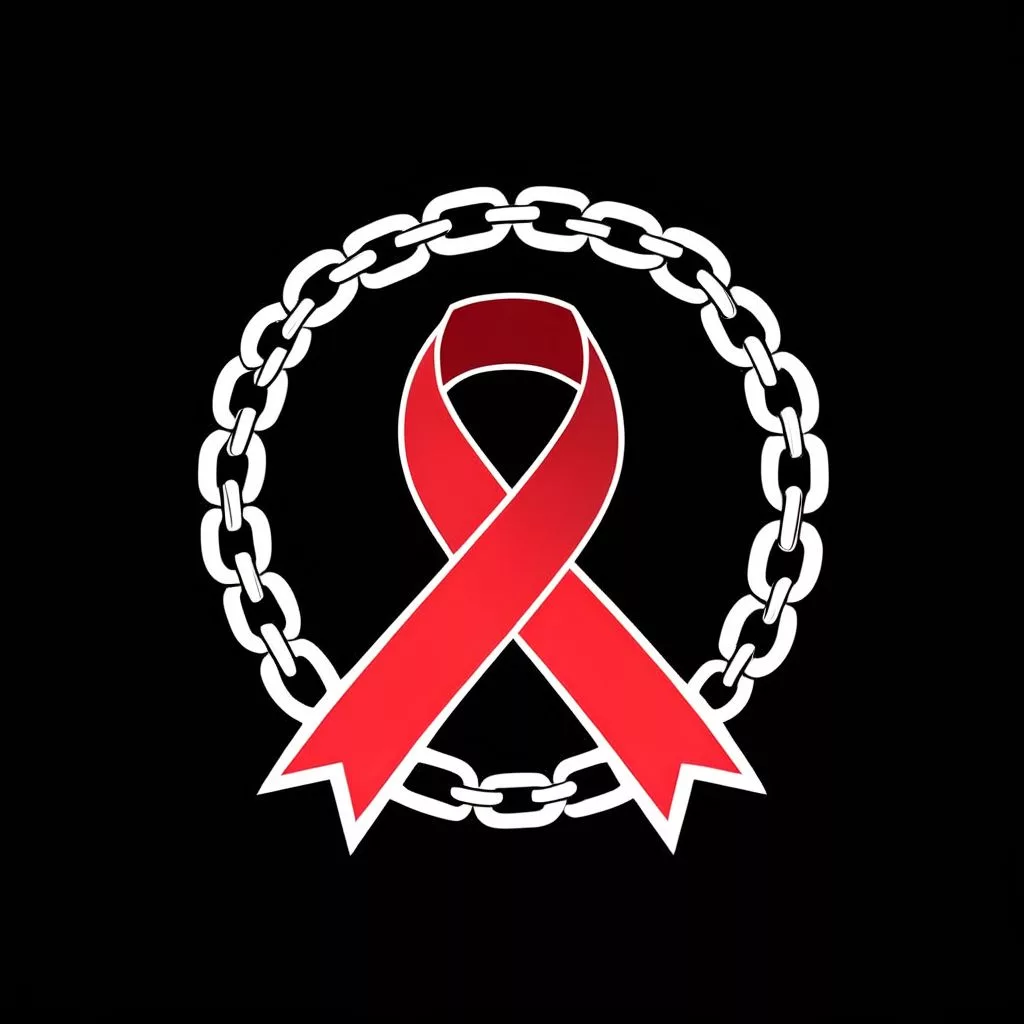South Africa is facing a serious threat to its fight against HIV because of potential cuts to U.S. funding. Without this essential support, the number of people receiving life-saving HIV treatment might drop from 78% to just 70%, leading to hundreds of thousands more infections and deaths by 2028. This situation could undo years of hard work and progress, putting many lives at risk. South Africa has been a leader in HIV research and treatment, but the looming funding cuts could unravel the hope and success built over time. Time is critical, and continued international support is needed to keep the fight against HIV strong and effective.
What is the potential impact of U.S. funding cuts on HIV treatment in South Africa?
The potential cuts to U.S. funding through PEPFAR could lead to a dramatic decline in antiretroviral (ARV) treatment coverage in South Africa, dropping from 78% to an estimated 70% by 2026. This may result in an additional 150,000 to 295,000 HIV infections and up to 65,000 deaths by 2028.
Warnings from a Crucial Study
South Africa faces a potential resurgence of its HIV crisis as recent events threaten to undo years of hard-won progress. The National Health Department of South Africa expressed serious concerns about the potential loss of U.S. funding through the President’s Emergency Plan for AIDS Relief (PEPFAR). To understand the implications, the department commissioned a modeling study with worrisome predictions. Researchers from the University of Cape Town and the University of the Witwatersrand forecasted a dramatic increase in HIV infections and deaths if this crucial funding ceases. Their estimates suggest an additional 150,000 to 295,000 HIV infections and up to 65,000 more deaths by 2028 should the South African government fail to fill the funding gap left by PEPFAR-supported services.
South Africa’s Leadership in HIV Research
Historically, South Africa has been a cornerstone in the global fight against HIV/AIDS. The country, which has one of the world’s most severe HIV epidemics, has led pioneering clinical trials on antiretroviral therapies, HIV vaccines, and prevention strategies such as pre-exposure prophylaxis (PrEP). Institutions like the South African Medical Research Council (SAMRC) and the Centre for the AIDS Programme of Research in South Africa (CAPRISA) have made significant scientific contributions. Furthermore, South Africa’s large-scale treatment programs have served as a model for other nations battling the epidemic.
PEPFAR has been pivotal in supporting HIV-related services globally, including in South Africa. In 2024, the program allocated approximately R7.5 billion to non-profits, enabling the employment of health workers in government clinics and the operation of independent health facilities. However, this landscape changed dramatically in January 2025 when U.S. President Donald Trump issued an executive order suspending most U.S. foreign development assistance. This decision forced many organizations reliant on PEPFAR funds to face closure due to financial shortfalls, as reported by Spotlight.
The Potential Decline in ARV Treatment
The study projects a worrying decline in antiretroviral (ARV) treatment coverage. In 2024, ARV coverage was at 78% and was expected to rise to 81% by 2026. Without PEPFAR funding, this coverage could plummet to 70% by 2026. This potential decrease underscores the critical role of international aid in sustaining public health initiatives and highlights the dire consequences of withdrawing such support.
South Africa’s battle against HIV/AIDS has seen both significant challenges and remarkable achievements. The country’s scientists and health practitioners have consistently been at the forefront of research and treatment innovations. The development and implementation of antiretroviral therapies, for example, have transformed HIV from a death sentence into a manageable chronic condition for millions.
The South African government’s large-scale treatment programs were pioneering efforts that set a precedent for the global response to HIV/AIDS. These programs provided not just life-saving medications but also a comprehensive care framework that includes prevention, treatment, and support services. Their success has served as both a beacon of hope and a blueprint for other nations.
The Impact of Funding Cuts
Despite these advancements, the looming funding cuts cast a dark shadow over this progress. A potential decline in ARV coverage could reverse years of gains, leading to increased HIV transmission and higher mortality rates. This scenario starkly illustrates how precarious public health achievements can be when dependent on external funding.
The history of international aid in global health is a complex tapestry of triumphs and failures, often influenced by shifting political landscapes. Established in 2003 under President George W. Bush, PEPFAR has been one of the most successful global health initiatives, providing over $90 billion in funding and saving millions of lives. Its impact in South Africa has been profound, supporting everything from laboratory infrastructure to community-based outreach programs.
However, the suspension of U.S. foreign development assistance in 2025 marks a critical turning point. This decision threatens not only the continuity of existing programs but also jeopardizes future innovations and the implementation of new strategies. The potential consequences extend beyond South Africa, as other countries similarly dependent on PEPFAR funding face comparable risks.
South Africa’s Integral Role in Global HIV Research
South Africa’s contribution to global HIV research and treatment is invaluable. The country’s scientists have led numerous pioneering studies, including those on HIV vaccines and microbicides. These efforts have significantly enhanced the global understanding of HIV transmission and prevention.
The Centre for the AIDS Programme of Research in South Africa (CAPRISA) has been instrumental in several landmark studies. One such study demonstrated that a vaginal gel containing tenofovir could reduce HIV acquisition in women by 39%. This finding not only highlighted a potential new prevention method but also underscored the importance of empowering women in the fight against HIV.
The South African Medical Research Council (SAMRC) has played a crucial role, particularly in its collaborations with international partners. These partnerships have facilitated resource sharing, capacity building, and the implementation of best practices across borders. The SAMRC’s contributions to the global HIV response underscore the importance of sustained international collaboration and the dangers of isolationism.
Urgent Need for Continued Support
The potential decline in ARV treatment coverage poses a significant public health risk. A reduction to 70% coverage by 2026 could undermine the progress made in controlling the epidemic. Lower coverage rates would mean more people living with HIV without access to life-saving medications, leading to higher viral loads and increased transmission rates.
Moreover, the health infrastructure built over decades with international aid support is at risk. Health workers, many of whom are employed through PEPFAR funding, face job losses. This not only affects their livelihoods but also the quality and accessibility of care for people living with HIV.
The Path Forward
The narrative of South Africa’s fight against HIV/AIDS is one of resilience, innovation, and collaboration. The country’s scientists and health practitioners have consistently pushed the boundaries of what is possible in HIV research and treatment. Their efforts have saved countless lives and provided hope to millions.
However, the potential withdrawal of PEPFAR funding threatens to unravel this tapestry of progress. The projected increase in HIV infections and deaths serves as a stark reminder of the fragility of public health gains. It underscores the importance of sustained funding and international cooperation in the fight against HIV/AIDS.
As the world watches, South Africa stands at a crossroads. The nation’s response to this crisis will not only determine the future of its HIV epidemic but also set a precedent for global health initiatives. The stakes are high, and the consequences of inaction could be devastating. Nonetheless, South Africa’s history of resilience and innovation offers hope that, even in the face of adversity, progress can continue.
FAQ on the Looming HIV Crisis in South Africa
What are the potential consequences of funding cuts to U.S. support for HIV treatment in South Africa?
The potential cuts to U.S. funding, particularly through PEPFAR, could result in a decline in antiretroviral (ARV) treatment coverage from 78% to approximately 70% by 2026. This reduction may lead to an estimated additional 150,000 to 295,000 new HIV infections and up to 65,000 deaths by 2028, reversing years of progress in the fight against HIV.
How has South Africa contributed to global HIV research and treatment?
South Africa has been a leader in the global fight against HIV/AIDS, conducting pioneering clinical trials on antiretroviral therapies, HIV vaccines, and prevention strategies. Institutions such as the South African Medical Research Council (SAMRC) and the Centre for the AIDS Programme of Research in South Africa (CAPRISA) have made significant contributions that have advanced global understanding and strategies to combat HIV.
What role does PEPFAR play in South Africa’s HIV response?
PEPFAR, established in 2003, has been instrumental in providing funding and support for HIV-related services in South Africa. In 2024, it allocated approximately R7.5 billion to various non-profits, facilitating the employment of health workers and supporting health facilities. The program’s suspension in 2025 poses a significant risk to the continuity of these essential services.
What would be the impact of decreasing ARV treatment coverage on public health?
A decrease in ARV treatment coverage to 70% by 2026 would have dire public health implications. It would result in more individuals living with HIV without access to life-saving medications, leading to higher viral loads, increased transmission rates, and ultimately more infections and deaths. This scenario highlights the critical nature of sustained international support.
How can the international community help in addressing this crisis?
Continued international support is crucial in maintaining and enhancing HIV treatment and prevention programs in South Africa. This can involve not only financial contributions but also partnerships that facilitate research, resource sharing, and capacity building to ensure that the health infrastructure remains robust and effective.
What does the future hold for South Africa’s fight against HIV/AIDS?
South Africa’s response to the potential funding cuts will be pivotal in determining the future of its HIV epidemic. While the situation is grave, the country has a history of resilience and innovation in addressing public health challenges. With sustained international collaboration and support, there is hope that progress can continue despite the looming challenges.












